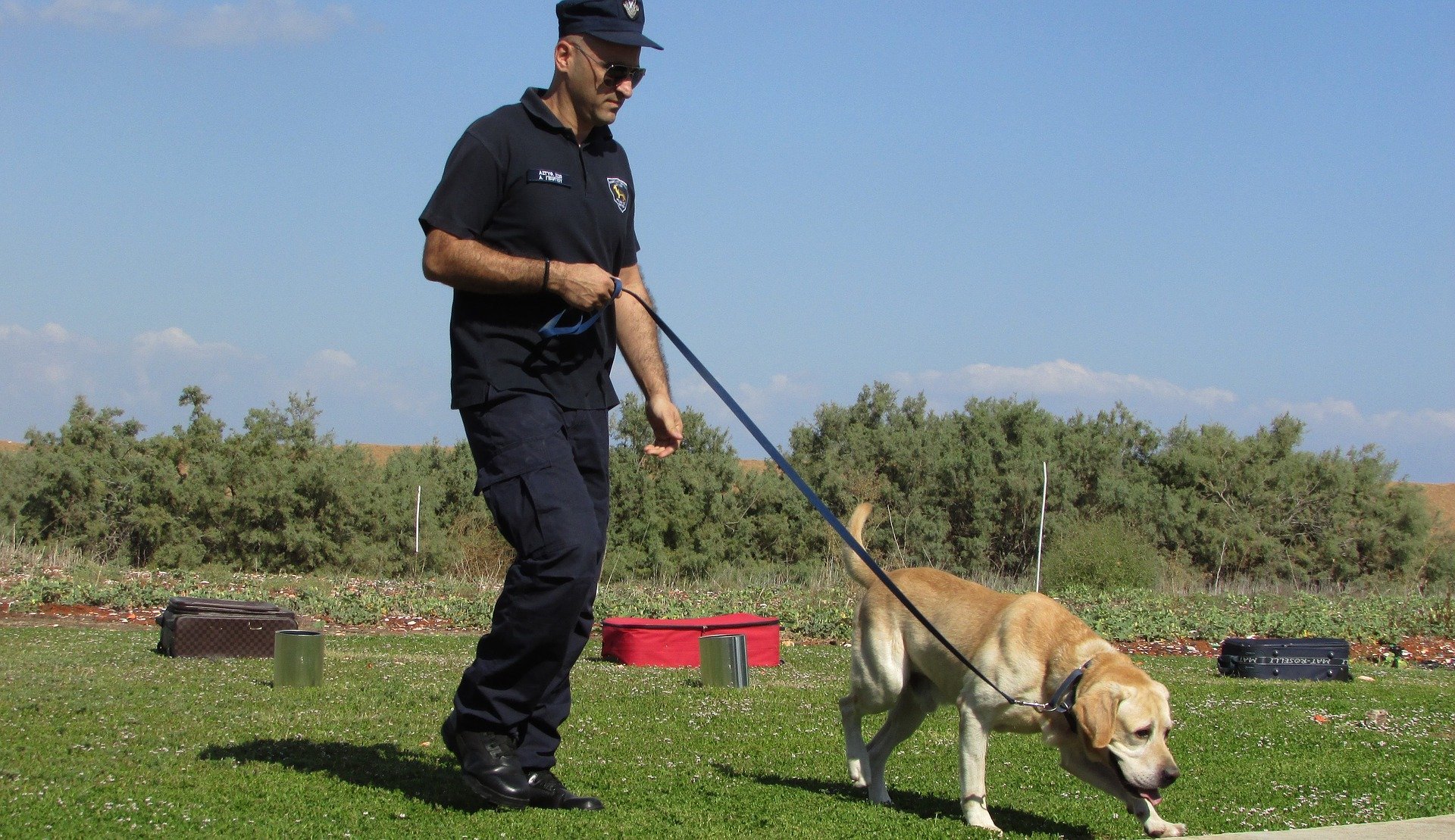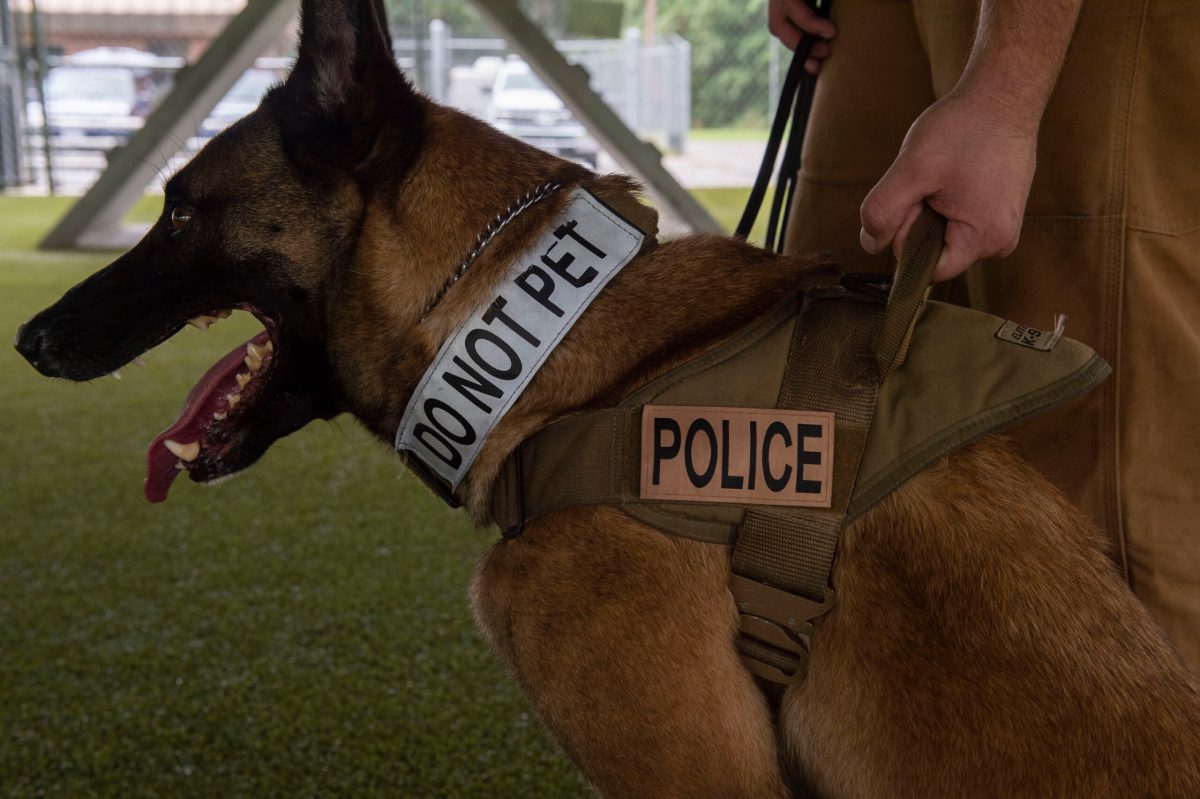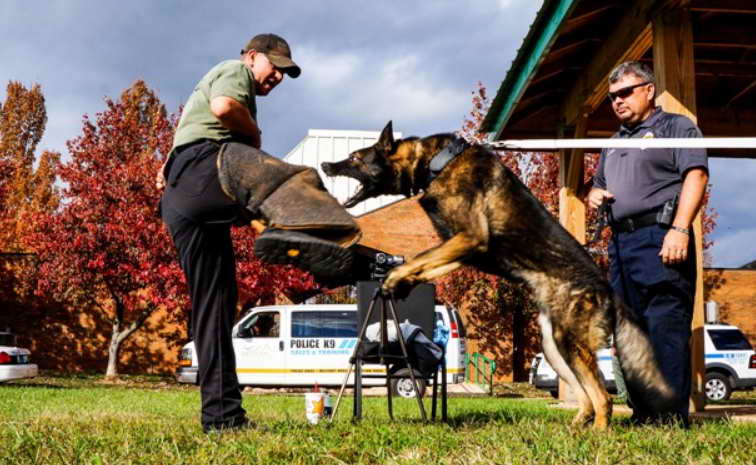What Is The Projected Growth For This Job Opportunity
According to the U.S. Bureau of Labor Statistics, there is a 5 percent anticipated growth for police dog trainers between 2014 and 2024. On average, the BLS reported the average salary for a law enforcement dog trainer is $58,320.
Keep in mind that canines will likely always be used to help out law enforcement officers, meaning there will always be a need for police dog trainers.
Police Dog Training: K9 Unit
The K9 Unit is one of the departments within the police force which consists of the trained police dogs and their officer handlers.
Dogs have been an essential component to serving and protecting humans dating back to the Roman times when they would serve as security and companions.
In 1888, a search was conducted in London, England for Jack the Ripper. Bloodhounds were enlisted to assist with the search due to their impressive sense of smell and direction.
It wasnt long after this search for Jack the Ripper in 1888 that the European Police Force began enlisting the help of canines.
Do Police Dog Handlers Keep Their Dogs
KEY INFO. Police dogs live with their handler and see their owner as part of their family. Therefore, to qualify as a handler you must have sufficient space in your home to house the dog. When these dogs retire, normally at around 9 years old, they usually become household pets, although this is not always the case.
Recommended Reading: How Do Police Train Their Dogs
Lights And Siren Training
K9 Unit training programs vary across the country. Whether or not they perform any type of siren or light training with the dogs will vary from program to program.
However, the Police Force training that is done after a Police Department has purchased their pup does include light and siren training.
It appears that the K9 Unit dogs respond positively to the lights and sirens, most likely because it means that they are on duty.
Why Are Police Dogs Called K9

Domesticated dogs are identified in Latin as Canis lupus familiaris, and the term canine has become a shortened version of that. The term K9 or K-9 is a homophone of canine and is used to abbreviate canine. While any dog can be referred to as a K-9, it is more commonly used to refer to police dogs now.
Canine working dogs have been used since the Middle Ages. Initially bloodhounds were used to hunt down outlaws. Over time, other dog breeds have been used, including German Shepherds, Retrievers, and Belgian Malinois.
Recommended Reading: How To Become A Police Captain
Becoming A Dog Handler After Specialist Studies
The officers who begin dog handler studies are chosen by the police departments. An officer who is interested in working as a dog handler first works as a patrol officer in a dog patrol in order to get a full picture of a dog handlers duties.
Before the applicant is selected for training, the Police Dog Training Centre assesses their suitability for the dog handlers role.
An officer who specializes in dog handling will complete patrol dog handler specialization studies at the Police University College, which will give them the necessary qualifications to take on the duties of a police dog handler. The training takes two and a half years to complete. A portion of the studies is contact teaching at the Police Dog Training Centre in Hämeenlinna.
Over the course of the studies, dog handlers and their dogs will take the police dog behavior test, endurance test and training inspections for the various training areas.
Teaching The Pup To Be Aggressive As Well As Loving
Yes, it is possible for a K9 Unit dog to be aggressive and serious as well as affectionate and loving. Many people believe that a dog that is trained for protection purposes is on the job all of the time and is unable to relax and be a loving family pet.
The trick here is proper training. If the bond between handler and dog is strong then the dog will have no problem following the commands are given to him by his handler.
Therefore, if he is on the job and is commanded to be on alert or to attack then the dog should do so.
If the dog is commanded to relax and be at ease then he should do so. In fact, most service dogs will walk wag their tails, drool, and show excitement and affection unless told otherwise.
This is the sign of a well-formed bond between handler and dog.
Don’t Miss: How To File A Police Report For Threats Online
Become A Dog Trainer With Help From Custom Canine
If you want to become a dog trainer for law enforcement canines, please reach out to our team at Custom Canine Unlimited. We offer in-person and online K9 training, and our dog facility is nationally recognized for producing hardworking, well-trained law enforcement dogs.
The success of law enforcement dogs all starts with an experienced, trusted dog trainer. Become a dog trainer today with the help of Custom Canine. Contact us today by calling our office at 799-4806 or .
Importance Of Obedience Training In Attack Training
This is the first stage in the process of training a dog to become an attack/guard dog. Once a dog is fully trained to follow the commands given by the trainer, it becomes easy to carry on with further training. Some of the basic commands included in obedience training are stay, sit, come, and heel. Attack training can begin only when a dog is properly trained in these basic commands.
Obedience training should be carried out in isolation, as well as with distractions. Only then the dog would be considered fit for any further training.
Also Check: How To Be A State Police Officer
What To Do If Police Dogs Search Your Car
This tip works. Dozens of citizens have told me of their success with it, and it has worked for me on one occasion.
Anytime police dogs are deployed to search your auto, announce loudly and boldly that you are aware police can make their canine false-alert and you know what a true alert looks like. This scares the officer, who, after hearing this, will usually walk his dog around the auto and then leave.
How To Apply For A Retired Police Dog
Police dogs form intensely strong bonds with their handlers in the line of duty. As such, their handlers are always the first choice for adopters when the dogs retire. In most cases, these dogs do go on to live carefree lives as family pets with their police partners.
Usually, opportunities for civilians to adopt retired police dogs only occur if a dogs handler passes away or cannot otherwise care for him or her. Sometimes, dogs who failed out of police dog training and never actually performed active service become adoptable. In both cases, other law enforcement officers will be first in line to adopt, followed by the general public.
There is no organization strictly dedicated to adopting retired police dogs. Instead, organizations like the National Police Dog Foundation and the Retired Police Canine Foundation assist handlers with things like medical care and training for their retired pups.
Mission K9, however, is an organization that assists former working dogs in many ways, including arranging civilian adoptions. To find out more about their adoption procedure, as well as the process for adopting a retired police dog, visit their Adopt page.
You May Like: Can The Police Bug Your House Without You Knowing
These Police Officers Are Proof That Reward
In some training circles, its still a sacred cow: the idea that the only way to get a dog trained to near perfection and utter reliability is to teach him that he has to comply it doesnt matter if he wants to. Adherents of this school of training believe that in order to create a dog who responds reliably when first commanded, force-based training techniques must be used.
Fortunately, more and more trainers are realizing this sacred cow is a bunch of bull.
Positive reinforcement training has made significant inroads among much of the dog-owning population. However, many handlers involved in precision-based sports such as field work, obedience, and Schutzhund, along with many pet owners of strong breeds such as Rottweilers, Dobermans, and so-called bully breeds, still believe a healthy dose of compulsion is necessary to convince the dog he must perform as commanded .
The trainers of working police dogs generally feel that their dogs and their jobs also require the use of force-based techniques a majority of law enforcement dog handlers still rely on compulsion. Fortunately, a growing number are beginning to realize that positive reinforcement not only produces reliable dogs, it also decreases dog-handler conflict and creates stronger working relationships.
How Are They Trained

The police canines meet their trainers for the first time when they are 7 weeks old where they are required to go through a basic test. This test is conducted to identify the natural ability of a dog to follow orders, holding them down, squeezing their paw, crunching paper, fetch, bowl bang and clash and ragtime to judge whether they have what it takes to enter the force or not. These dogs are taught to use their instincts on instruction and in a supervised manner.
Police K9s are rewarded for their good work. While on the training they receive good care, food, exercise, protection, and the training have an emphasis on safety, control, and efficiency. They learn obedience, following commands, search, attack, tracking, substance detection and how to keep focused on distracting situations so that they are prepared for any eventuality while on duty. Dogs are known to be a mans best friend it is for us to see that they are not overworked. After all, a happy dog is a healthy dog.
Recommended Reading: Can Police Track A Phone With Imei Number
How To Buy Police Dogs
A police dog is an important part of the layered approach of law enforcement today
Properly trained and deployed K-9s have a direct impact on reducing crime in the areas where they are deployed.
Studies have shown that dogs search faster and more accurately than humans. Detection K-9s can locate hidden contraband more quickly and more accurately than hand searching and, as the size of the search area increases, that efficiency becomes even more pronounced. K-9 narcotics and drug money seizures keep contraband off the streets and provide funds for key equipment purchases. No matter how large or small your agency may be, a K-9 unit is an integral part of todays law enforcement package for your community.
Getting a new K-9 unit started, however, requires a complete understanding of the issues involved and the options available to the purchasing agency.
K9 Dog Training: How Police Dogs Are Trained For Duty
While dogs serve people in a variety of ways around the world, some of the most visible service dogs are police dogs. K9 dogs handle many jobs including protecting the dog owner, sniffing out drugs or bombs and patrolling sensitive areas.Each job requires different skill sets and thus a different type of training.
Also Check: How To Get A Police Report From Another State
Some Police Dogs Are Trained To Tell Us Where Things Are Hidden
Teaching dogs associations is one way that trainers help dogs learn to do their jobs. We can understand more about animal learning by looking closely at police dogs. For example, how are police dogs trained to tell their human partners when they have smelled something important? This is more complicated than learning to sit, but it is based on the same basic learning processes.
Police dogs can do something that their human partners cannot often do: they can locate important things just by smell . Dogs can sniff out dangerous or illegal items, or even find a missing person. But the dogs first must learn what odors are important to their human partners and how to tell their partners about what they are smelling. We can break down how dogs learn this into four main steps . The learning that occurs at each of these steps does not happen in 1 dayit takes some time. How long it takes depends on the dog and the trainer, and some trainers may do things a little bit differently .
- Figure 2 – A dogs nose.
- When a mammal like a dog sniffs, tiny odor particles bind to areas in the nose. When this happens, signals are sent to the brain, where they are identified .
The Process Of Police Training
Each and every year, Global Training Academy welcomes hundreds of patrol dogs and their handlers to our world class facility in Somerset, Texas. With the ability to train dogs for any number of real-world situations, our training centre truly delivers with the most thorough and intensive training program available.
Training any dog requires constant rehearsal and hours upon hours on ongoing trainingbut training a police dog requires even more. The process does not simply end once police K9 dogs have left the training program. In fact, the most important factor to success is often the maintenance work that occurs long after training has been completed.
We provide all of our handlers with the information and skills necessary to keep their dog in working shape. It is also quite common to have police K9 dog handlers return to refresh and update their handler training.
Recommended Reading: What To Take In College To Become A Police Officer
Positive Training Pays Off In The Long Run
Smart dog training is simple, but that doesnt make it easy. One of the biggest mistakes pet owners make is thinking their dog knows something long before he really does. When the dogs behavior falters, some owners choose to punish the dog while others blame the technique, declaring it ineffective. In todays instant gratification society, its hard not to demand desired results right away, but as the Phoenix Police Department found, diligence and patience are valuable virtues.
Its a very time-consuming process for us, admits Bingaman. At the compulsion end we could have dogs up and running in a couple months or less, but the long-term effects were shorter and we continually had to put in more training. With the operant training, our training hours can be reduced and we have dogs who, if we didnt do any training for weeks, can still come out and work because theyve learned for the right reason.
One of the biggest advantages of the agencys switch to positive reinforcement training has been removing conflict from the dog-handler relationship.
The dramatic reduction in compulsion also helps protect their investment by lengthening the dogs careers. In compulsion training, all the corrections on a pinch or choke collar come from the neck, which can breakdown vertebrae and eventually shorten or end a dogs career.
How To Train Your Dog Like A Cia Officer
Lab in training
Not every dog is cut out for life as a CIA agent, but that doesnt mean every dog cant learn from their example! For those of us with more humble aspirations for our dogs, the CIAs training program offers tips to help train any dog, whether theyre in the field sniffing out explosives or on the couch sniffing out potato chips.
The CIAs 10 most important tips for training your dog:
Also Check: What Police Number To Call For Car Accident
Dogs Pay Attention To Us And Learn From Us
Of all the different types of animals, dogs are unique in how well they work with us. Many thousands of years ago, dogs started helping humans to hunt, guard our herds of sheep, and protect our homes. In return, humans provided shelter and food for the friendliest and best-working dogs and their puppies.
Nowadays, you can see the results of thousands of years of dogs living with humans, something scientists call domestication. For example, dogs pay more attention to humans than their wild wolf relatives do. Dogs watch where we go, as well as where we look and point . Because dogs are so interested in us, we can train them to do a variety of behaviorsand they are very eager learners.
Do Police Dogs Get Paid

Police dogs do not receive pay in the same way that police officers are paid. In general, their expenses are covered, such as food and shelter. This may be from the police department or garnered through donations to the department. Their medical expenses are also generally covered, although donations may be collected for major surgeries or procedures.
In some areas, retired police dogs garner a type of retirement. It may not be much, but its design is to help the handler, who the retired dog usually lives with, care for the police dog.
K-9 police dogs are an integral part of the law enforcement program. They can go places that human officers may not be able to reach and detect things such as explosives and drugs that arent readily apparent on physical inspection of an area. These dogs go through a rigorous training process to make them highly skilled police officers, often learning commands in languages such as German or Dutch rather than English.
Don’t Miss: How To Become A Police Officer In Florida